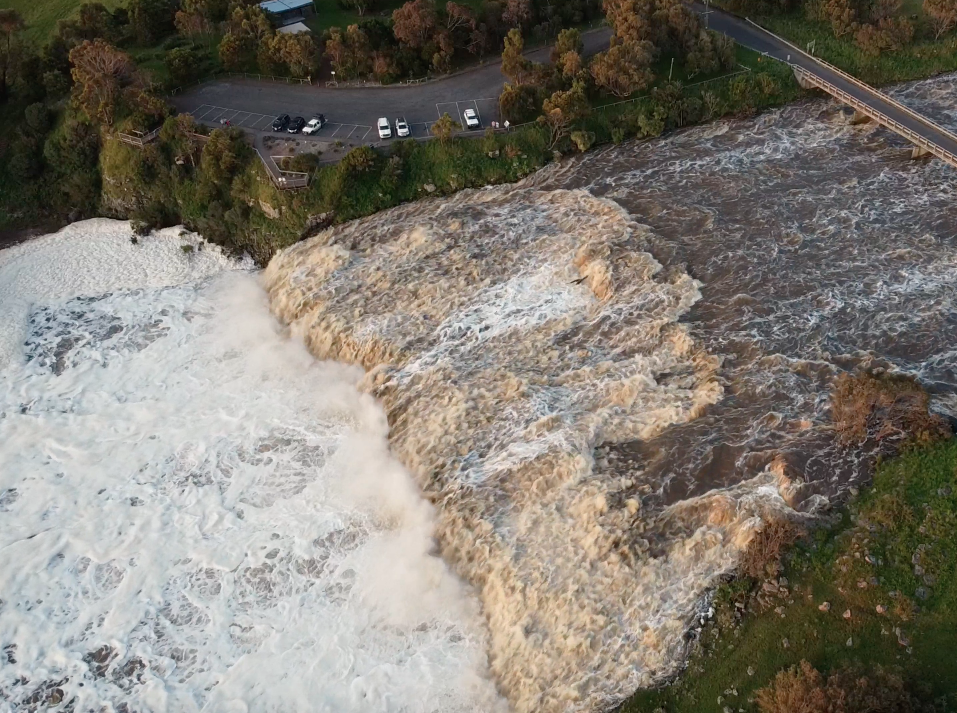
The massive amounts of rain coming down across Victoria and NSW have left many anglers searching far and wide for fishing options. Rivers are swollen, lakes and spilling, even the ocean is brown and muddy. So what impact will all this freshwater have on the fishing, both short and long term?
Rivers
There’s no doubt that most of our rivers and creeks have been unfishable for the past month, particularly in low lying, flat areas where water takes much longer to drain than in hilly upstream areas. However, flooding brings many benefits to our inland rivers and streams. Large amounts of new structure (whether this be trees, logs, or even shopping trolleys!) are brought into the waterways, to provide fish with habitat. The more habitat in a river, the more fish it can support. Old debris, dead vegetation and sediments are flushed out, basically pressing the refresh button on a river, kicking off the food chain. Small food species such as yabbies, shrimp and nymphs will proliferate during flooding, providing fish food for years to come. Many of our native fish also spawn en masse during floods, with all the new food able to quickly grow young fish. In addition, with all the water washing into rivers, terrestrial food such as worms are in abundance and something of which the fish take full advantage. Quite a few of the trout I’ve caught in recent months have been full of worms, still in their mouths after being caught! So expect to see many fat fish coming up. Particularly near large reservoirs, fish will get washed over the dam walls and enter the river below. The average lake fish can be larger than normal, so after flooding we often see much larger quantities and qualities of fish in these areas. When the waters subside, try your luck around the base of dams, weirs and waterfalls; as fish come downstream and can’t come back up. Flooding will also help spread fish through a waterway; especially important with our local trout fishery, where fish are stocked in high densities near bridges with large stretches of largely fishless sections in between. Dispersing the fish through the waterway allows for more food for the fish, and less pressure; meaning better fishing!
Lakes
Depending on the amount of inflow, flooding can have either a minor or major impact on lake fishing. With the majority of our reservoirs and dams across southern Australia at full capacity, water security is safe for at least a few years. Couple that with record stocking levels across Victoria for both trout and native fish, and we’ve got exciting times ahead! Similar to rivers, rising water levels in lakes allows for fish to move onto newly inundated areas, taking advantage of the extra food offered to them. You’ll often find fish congregating near inflowing rivers and creeks during these times; so concentrate your efforts around flowing water. Lake Purrumbete has seen some quality fish taken near the waterfall in recent weeks, which has been bringing lots of water into the lake. Brighter and flashy lures help stand out in the dirty water. If you’re landbased, focus your efforts on shallow margins; trout will move right onto the banks in surprisingly shallow water they typically can’t access.
Offshore
Many anglers mightn’t realise the impact that flooding can have on the ocean, however the ocean as we know it couldn’t survive without freshwater inflows. Many species, such as mulloway, require flooding to gain access between rivers/coastlines and to provide spawning cues. Here in the southwest, our mulloway originate from the Coorong (Murray Mouth) in South Australia. Large-scale flooding a decade ago allowed for excellent mulloway spawning opportunities; and as a result, we saw good numbers of mulloway making their way along the coast to our local rivers. With the Coorong at the healthiest it’s been for years, fingers crossed we see big numbers of mulloway coming our way over the next few years. Flooding also brings massive amounts of nutrients into our oceans; stimulating plankton blooms, and kicking off the food chain. Large plankton populations lead to increased bait fish populations; which feed our tuna, kingfish and sharks. The excellent fishing here in the Southern Ocean relies on upwellings and floods to provide nutrients and feed our fish. We see more fish and healthier oceans as a result. Some species (such as crayfish on the reefs near the Hopkins mouth) don’t tolerate high freshwater levels, but luckily most are able to move along the coast or further offshore to more suitable water.
Clearly for fishing, flooding is short term pain for long term gain. We can’t wait to see how good the fishing becomes over the next year, both inland and offshore!
-Tim